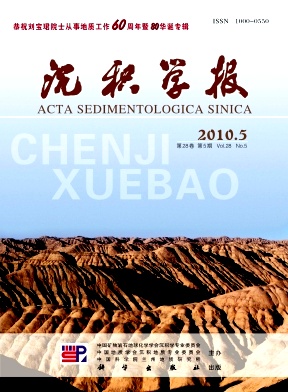Buried Diagenesis, Structurally Controlled ThermalFluid Process and Their Effect on Ordovician Carbonate Reservoirs in Tahe, Tarim Basin
- Received Date: 1900-01-01
- Rev Recd Date: 1900-01-01
- Publish Date: 2010-10-10
-
Key words:
- burial diagenesis
Abstract: The understanding for layered weathering crust model once sustained oil and gas exploration of the Lower Paleozoic deepburied carbonate in the Tarim Basin. However, strong heterogeneous characteristics of the carbonate reservoir types increases exploration risk in the study area. As a case study, The MiddleLower Ordovician carbonate reservoirs of Tahe area, Tarim basin, are studied in this paper, with focuses on superposition effect of burial diagenesis and structurally controlled thermalfluid, on reservoir formation. Finally, combined with other elements including epigenetic karst process and so on, a comprehensive explanation on reservoir distribution is given in this research. The main recognition includes: ① Normal deepburied diagenesis of Ordovician carbonates mainly resulted in precipitation rather than dissolution, and constructive modification primarily related to the epigenetic karstification (paleokarst) or structurally controlled thermalfluid flow and led to strong heterogeneity of carbonate reservoirs. ② From the Lower Ordovician to Upper Ordovician, thermal fluid flow evidence in the lower carbonate strata is stronger than that of the upper carbonate strata. ③ The constructive modification of structuralthermal fluid flow in Ordovician carbonate mainly occurred in structural intersection of superimposed faults developed during MiddleLate Devonian and Permian, respectively, and the strong preexisted epigenetic karstification area formed at MiddleLate Ordovician and preCarboniferous periods. The most efficient carbonate reservoirs have limited genetic relation with highenergy depositional facies in the study area. This paper puts forward a conceptual model about structuralgeofluid processes and related reservoir formation for the Ordovician carbonates in Tahe area, which provides a new clue for further understanding formation and distribution of the studied reservoirs.
| Citation: | LI Zhong. Buried Diagenesis, Structurally Controlled ThermalFluid Process and Their Effect on Ordovician Carbonate Reservoirs in Tahe, Tarim Basin[J]. Acta Sedimentologica Sinica, 2010, 28(5): 969-979. |






 DownLoad:
DownLoad: